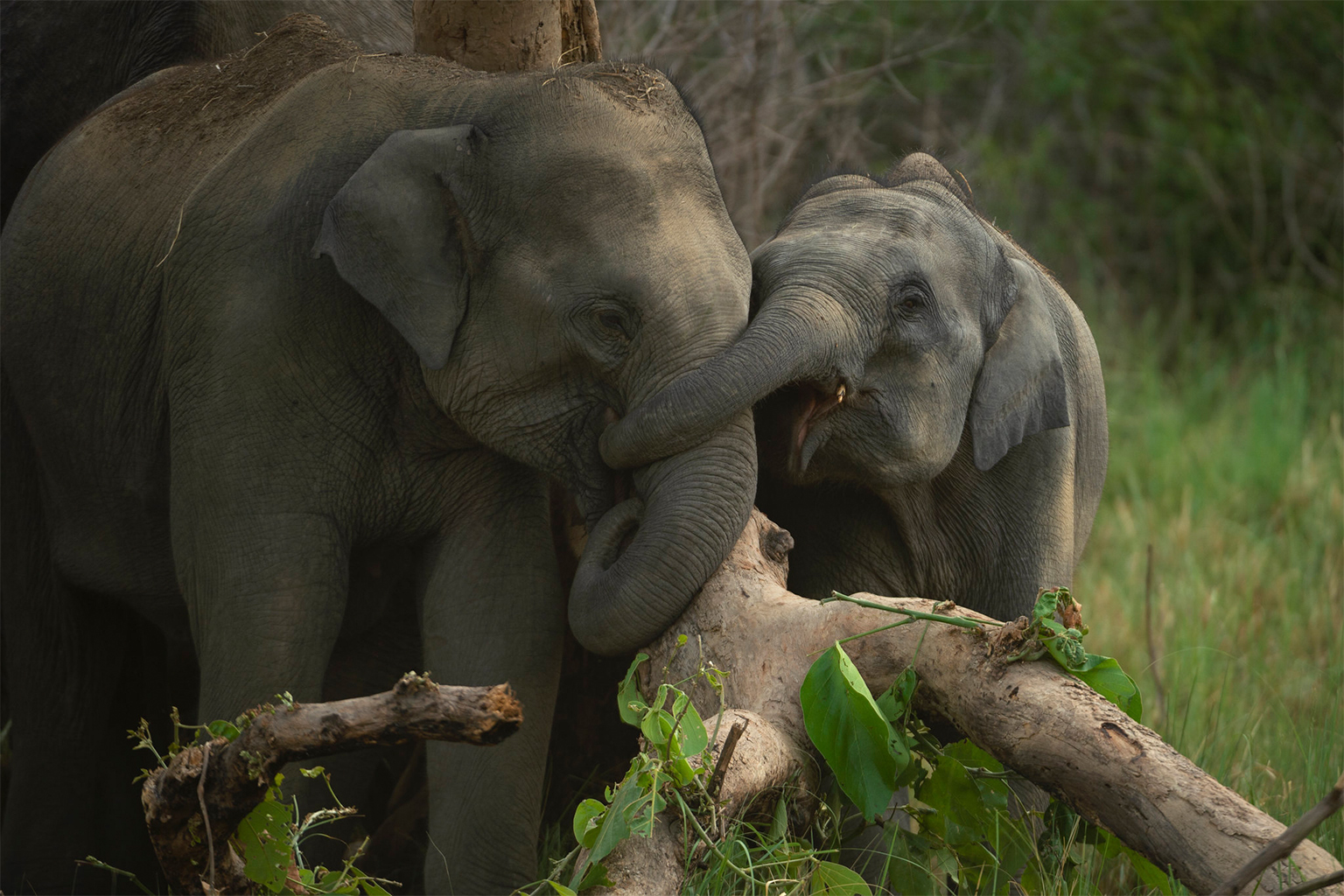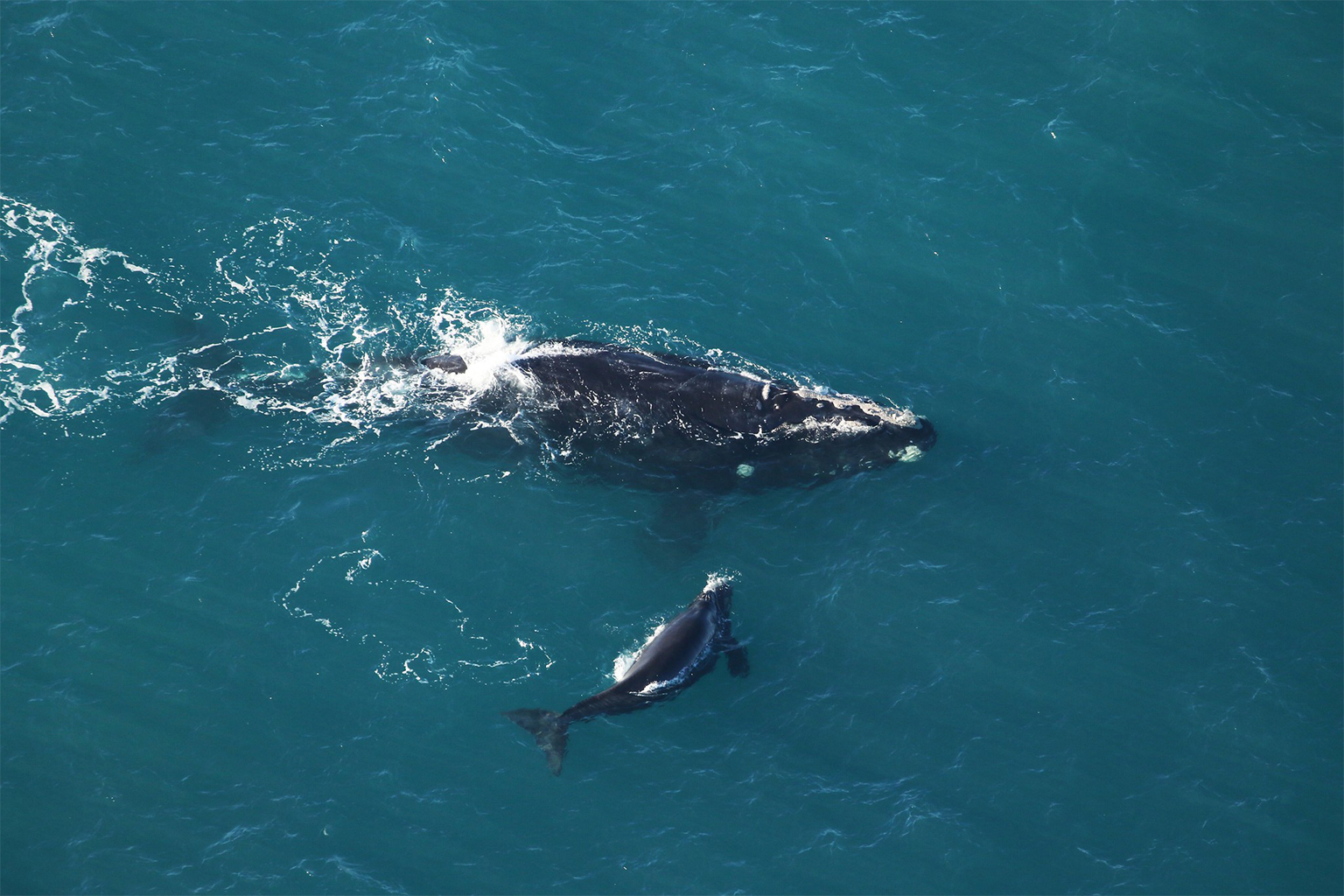- Research has shown that culture exists in myriad animal species, allowing information to be shared between generations, leading to occurrences of tool use and potentially affecting animals’ adaptability to changes to their environment.
- In a new paper, scientists propose a stepwise process to account for and protect animal culture in conservation efforts.
- They advocate an approach to conservation that integrates culture with conventional considerations such as genetic diversity, rather than using it as a “stand-alone” tool.
The earliest reports of nutcracking behavior in chimpanzees by Western scientists came in the 1840s. In the time since, evidence of animals modifying something in their environment and then using it to their advantage has turned up in manifold species, extending far beyond our closest relatives in the Primate order to dolphins, crows, even octopuses. Uncovering these behaviors has shattered a perceived boundary once thought to separate us humans from the rest of the animal kingdom, and it’s led to the broader assertion that animals beyond Homo sapiens have the capacity for culture.
Acknowledging that fact — which takes the form of nutcracking in chimps, songs in humpback whales, and decades’ worth of knowledge stored in the brains of elephant matriarchs — brings up a host of behaviors that may be important for scientists, wildlife managers and policymakers to protect through conservation efforts.
Therein lies the challenge, according to a recent paper in the journal Conservation Letters.
The ability of chimpanzees to crack nuts, a behavior that’s more than 4,000 years old, occurs in a few select groups of Pan troglodytes in the forests of West Africa. Does this behavior, perhaps passed down and honed through millennia, make these groups higher-priority targets for conservation measures, such as the inclusion of their range in a protected area? How does the value of that trait square with the need to protect the diversity of genes within the species necessary to ensure its continued survival?

In 2017, these sorts of questions led the Convention on the Conservation of Migratory Species of Wild Animals, a United Nations environmental treaty, to call for the greater inclusion of animal culture in conservation measures. The five-step process proposed begins with building consensus about why culture should be preserved and ends with developing specific strategies tied to “concrete actions.”
“Animal cultures have become a hot topic in wildlife conservation circles, and multiple approaches have been proposed about how to best tackle this issue,” Erin Wessling, a postdoctoral fellow in human evolutionary biology at Harvard University and a co-author of the study, said in an email. “We saw a need for clearer definitions in implementing culture in conservation, and wished to provide food for thought that can help to guide these conversations and next steps.”
The team’s research, which appeared Jan. 6, lays out a process with “achievable milestones” that the authors say will allow considerations about animal culture to inform conservation measures.
Traditionally, decisions about conservation have been guided by metrics such as the genetic diversity of a given population within a species, or by the reproductive potential of a certain segment of a population. But what happens when a group of chimpanzee populations that are genetically similar nevertheless exhibit an array of cultural traits that might be worth safeguarding?
Another frequently cited example of the value of animal culture is the importance of older female elephants to their family groups. The number of offspring that these matriarchs can contribute to overall elephant numbers dwindles as they advance in age, potentially calling into question why they should be protected. However, research has also shown that these matriarchs’ learned experience acquired over their lifetimes is often an invaluable library of information that she shares with and passes down to subsequent generations, such as distinguishing friendly elephants from suspicious strangers from their calls.

Factoring in these considerations might, for example, support a shift in the boundaries of a proposed protected area so that it envelopes the group that possesses a specific behavior. Or managers might use such cultural capital as justification for special protections for the oldest members of an elephant family. Hjalmar Kühl, a senior scientist at the Max Planck Institute for Evolutionary Anthropology in Leipzig, Germany, who was not involved in this research, noted the importance of speaking with “one voice” about how culture should be included in the mix of concerns for conservation planning.
“If everyone says something different, decision-makers will be confused,” Kühl said.
In outlining a framework for discussion, “This study makes a concrete proposition,” he said in an interview. Though he would have liked to have seen the inclusion of specific case studies in the study, he said, “I think this is a valuable contribution to the current discussion.”
The study also points out possible drawbacks that might come with resting conservation decisions on considerations of animal culture. For one, there might be the temptation to treat culture as the sole issue taken into account.
“[W]hen it comes to prioritizing wild populations for conservation efforts, culture should not be used as a stand-alone conservation tool, but carefully integrated with existing conservation strategies,” Kathelijne Koops, a primatologist and professor at Switzerland’s University of Zurich and a co-author of the research, said in an email.
Lead author Susana Carvalho said that approach could be “ineffective and distract from ongoing conservation efforts.”

In the case of chimpanzees in West Africa, too much emphasis on the ability to crack nuts might override more conventional but still important considerations about populations’ genetic diversity.
“[T]he sooner we pinpoint the cons, the likelier it is that we can mitigate those risks and succeed in using culture as an effective tool in conservation,” said Carvalho, a professor of paleoanthropology at the University of Oxford.
The way to do that, the authors argue, is to ensure that culture isn’t just considered in the abstract, but that it leads to concrete solutions, as they propose in their stepwise process.
That said, the researchers also argue against requiring an unrealistic level of evidence to demonstrate that a given aspect of culture definitively and positively benefits a species’ or population’s survival. That could grind much-needed action in the face of the global biodiversity crisis to a halt, they write. The team notes that scientists still aren’t sure how being able to crack a nut with a stone or wooden tool impacts chimpanzees’ ability to reproduce, even though the behavior is “one of the most studied tool-use behaviors of one of the most intensively studied animals.”
Kühl agreed with the need to avoid “utilitarian thinking” when it comes to how, or even if, elements of animal culture improve animals’ fitness.
“For most populations … maybe even most species, we have no idea,” he said. “We cannot take this for granted.”
What is clear from ongoing research is that culture has turned up in an ever-expanding number of species, leading to the current debate about how to include it in conservation solutions.
“Just a century ago it was thought that culture was unique to humans, but research in recent years had shown that if we describe culture as all we learn from previous generations, culture exists in many species of fish, birds and mammals,” Andrew Whiten, an emeritus professor of evolutionary and developmental psychology at the University of St. Andrews in the U.K., said in an email.
“This is an important contribution to a growing understanding that culture pervades some animals’ lives,” Whiten, who was not involved in the study, said of the research.

As environments shape-shift around the animal species living in them as a result of climate change and human-driven changes to the landscape, the skills, behaviors, and information shared through a species’ culture could be what tips the balance toward its survival, and perhaps in ways that aren’t yet understood. That’s all the more reason for seeing that these cultures don’t disappear, Koops said.
“When cultural behaviours are lost, they disappear from that population’s bag of tricks and reduce their behavioural diversity and flexibility,” she said. “This cultural heritage, either material or immaterial, should be both recognized and conserved.”
Banner image: An adult chimpanzee communicates with a younger member of the group. Image by The Green Parent via Flickr (CC BY-NC-ND 2.0).
John Cannon is a staff features writer with Mongabay. Find him on Twitter: @johnccannon
Related listening from Mongabay’s podcast: Listen here as we explore the culture and social learning of sperm whales, scarlet macaws, and chimpanzees with author Carl Safina and whale culture researcher Hal Whitehead:
Citations:
Carvalho, S., Wessling, E. G., Abwe, E. E., Almeida‐Warren, K., Arandjelovic, M., Boesch, C., … Koops, K. (2022). Using nonhuman culture in conservation requires careful and concerted action. Conservation Letters. doi:10.1111/conl.12860
Koops, K., Soumah, A. G., Van Leeuwen, K. L., Camara, H. D., & Matsuzawa, T. (2022). Field experiments find no evidence that chimpanzee nut cracking can be independently innovated. Nature Human Behaviour. doi:10.1038/s41562-021-01272-9
McComb, K., Moss, C., Durant, S. M., Baker, L., & Sayialel, S. (2001). Matriarchs as repositories of social knowledge in African elephants. Science, 292(5516), 491-494. doi:10.1126/science.1057895
Mercader, J., Barton, H., Gillespie, J., Harris, J., Kuhn, S., Tyler, R., & Boesch, C. (2007). 4,300-Year-old chimpanzee sites and the origins of percussive stone technology. Proceedings of the National Academy of Sciences, 104(9), 3043-3048. doi:10.1073/pnas.0607909104
FEEDBACK: Use this form to send a message to the author of this post. If you want to post a public comment, you can do that at the bottom of the page.
